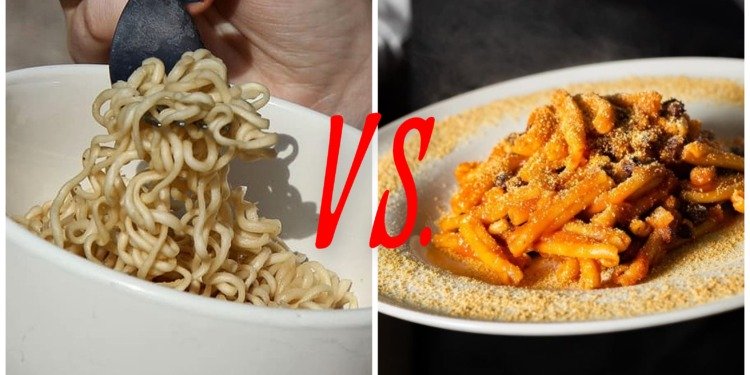Poor founders (and poor startup staff) hard times are upon them: Back to ramen noodles days when startups were starting up and money was scarce!
These are dark days. Big lay-offs in the tech industry, from Apple to Amazon, and no investor in sight. Venture capitalists are sitting down on their cash. According to data provider Crunchbase, globally, venture funds invested less than half of what they did a year ago in the first three months: It was $162bn then, it’s a paltry $76bn now in the first quarter of 2023.
Obviously, the impact on startup living conditions is severe, and the media got going with great advice, pulling out of their hat everything every startup founder has heard before:
- Get business loans!
- Get alternative sources of funding!
- Go for crowdfunding and cherry on the cake, get some precious customer feedback in the process!
Good ideas but not realistic when the crisis hits everyone…As to crowdfunding, unless you’re a whizz on social media, forget it.
So how do you, startup founder, survive the downturn?
Count on the Harvard Business School for smart advice:
- extend your “runway” by planning to survive on the capital you have;
- diversify your products to “expand your customer base” and generate more revenue;
- proactively embrace your best customers by strengthening relationships with them.
Spot on but tough decisions are needed: Cut expenses! Cut staff! Reduce office space! Focus on your core market(s)! Be mean and lean but especially lean. The leaner, the better!
Here’s where the famous ramen noodles diet comes in…
So back to ramen noodles, but don’t despair, it need not be that way. Hey, in our globalized world, why give into the monotony of instant ramen noodles?
Founders of the world, look beyond the “ramen noodle diet“! Put happy food on your plate (and in your life)!
Ah, but wait, how could I forget this? Silicon Valley’s inventiveness cannot be by-passed or overlooked. Since 2013, there has been a terrific alternative to ramen noodles, equally cheap and easy: Soylent.
Soylent, Silicon Valley’s diet solution…really?
The name “soylent” is intentional, picked from the sci-fi book and movie, Soylent Green, a great hit with techies:
On its website, Soylent is touted as a “healthy, convenient, and affordable food option for people on the go”.
So is it better than ramen noodles?
Well, if you’re the Spartan type who doesn’t mind eating the same thing every day, it might be the answer. But how does Soylent fare with most people? If one is to believe Soylent’s so-called Net Promoter Score (NPS), not so well. NPS is a metric used to track customer satisfaction on a scale of -100 to +100 and Soylent clocks in at a disappointing -25, with 25% Promoters, 25% Passives, and 50% Detractors.
Wow, why so many detractors? Evidently, half the people who tried it are not the Spartan type.
Does this mean ramen noodles are still the better option?
No. To begin with, nutritionally, unlike Soylent, ramen noodles in its American instant version, despite the bright packaging, are just, as doctors say, “bad for you”: Low in fiber, vitamins, minerals, and protein, they are very filling, but offer almost no nutrition.
Instead, you get lots of calories and to preserve it, ramen noodles contain a hefty dose of tertiary-butyl hydroquinone (TBHQ), a petroleum-based product that is hard to digest and is also found in pesticides and lacquers.
So your stomach gets lacquered inside with consequences I don’t like to think about…
Just for the record, ramen noodles in their country of origin, Japan, are not bad for you – neither taste-wise or nutritionally. A variation on Chinese noodles that landed in Japan when the country opened up to Chinese traders in the late 1880s, they’re served in restaurants as a soup-like noodle dish with many different kinds of yummy toppings. And no preservatives. Lucky Japanese, they keep their stomachs lacquer-free!
For those who live in Europe or America, and want to keep their insides free of any lacquer-producing chemicals, there is only one solution: Turn to local food, stay away from instant stuff preserved with unpronounceable things like tertiary-butyl hydroquinone.
Make way for pasta!
Historically, one of the world’s original fast foods is Italian pasta – it’s not just Marco Polo that brought it back from China, even the ancient Romans had it. An Etrusco-Roman noodle is first mentioned in the 1st century AD, reportedly made from the same durum wheat used to produce pasta today. It was called “lagane”, which is said to be the origin of the word for lasagna.
So among all the pasta dishes you’ve heard about, do you know which is the easiest, cheapest and fastest to make? The basic version of Pasta alla Siciliana.
What’s the secret here? All the ingredients are cheap: No expensive Parmigiano cheese. Instead, cheese is replaced with “pan grattato” – breadcrumbs, and you can use stale bread to do it (and earn sustainability-brownie points for avoiding food waste).
Olive oil however is indispensable and sure, an expense, but you don’t really need a lot of it, a small spoonful per person is enough.
And no need for fancy kitchen equipment: Just a regular pot for boiling water and a pan to toast the breadcrumbs.
Here’s how you do it:
Pasta alla Siciliana – basic version
Ingredients per person:
- 80 to 100g of pasta (depends on how big a person you are)
- Half a cup of breadcrumbs, fried in olive oil
- Garlic to taste
- Optional seasonings: Flakes of hot pepper, capers, black olives…
- olive oil as needed
- Salt and pepper as needed – you can replace some of the salt with canned anchovies (in olive oil)
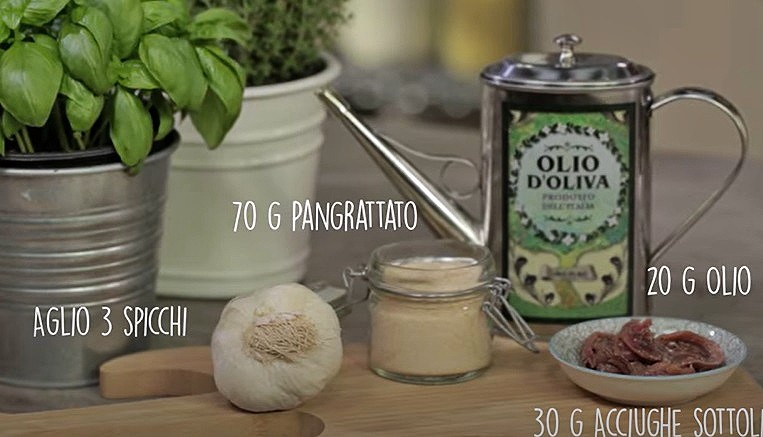
Method:
Start boiling water in a pot and remember to generously salt it.
While the pasta you’ve chosen (spaghetti is fine) cooks, prepare the sauce:
- Warm olive oil in a pan and toast the breadcrumbs, and once light brown, immediately pour out of the pan (or they will burn) and set aside;
- Crush garlic cloves to taste with the flat of a knife and peel the skin away;
- Drop the garlic in the pan with a little oil and fry for a couple of minutes (do not burn) – remove it
- Optional: drop 2 anchovies (canned in olive oil) and melt them in the pan, stirring with a fork until they melt (this replaces salt – so be careful not to oversalt)
- Optional additional seasoning: a spoonful of capers can be added – olives are good too.
When your pasta is cooked, turn off the heat and with a big slotted ladle, pull out the pasta and drop it directly in the pan, adding some flakes of hot pepper if you like your pasta “hot”. Be careful, keep the pasta very “al dente” to avoid overcooking when you heat up the pasta in your pan.
The trick to make it perfect: The reason why you don’t throw away the water in which you cooked the pasta is because a ladle or half-a-cup of that water will be needed when you stir-fry the pasta in your pan: That water is what makes the pasta sauce “come together” as a creamy sauce.
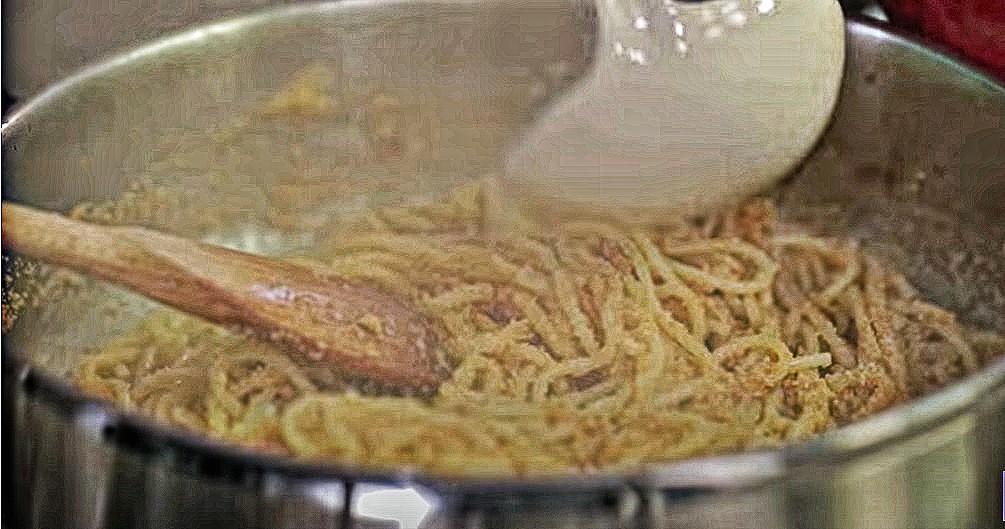
So now you have reached the key stage in the process: Stir-fry the pasta on medium heat, adding the breadcrumbs and a little water as you go along – ecco qua, in less than a couple of minutes, your pasta alla Siciliana is pronta:
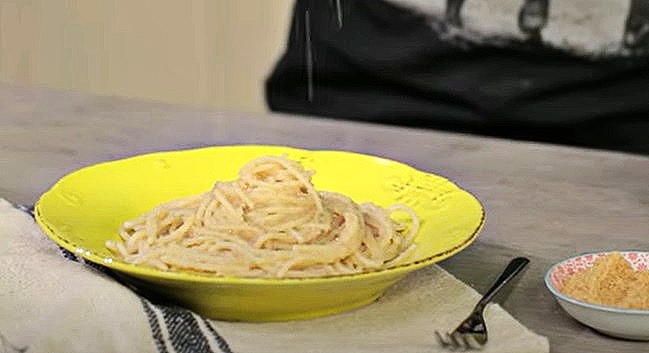
That amazing taste can be varied. Here are some quick and cheap variations:
For vegans: You can add:
-
- freshly cut cherry tomatoes to taste
- Tomato sauce, flavored with basil
- Olives
- Capers
- Toasted almonds
- And if you’re not afraid of extra efforts in cooking:
- fried cubes of eggplant
- Thin slices of sautéed zucchini
- Fried strips of pepperoni
- Fried broccoli
- Any combination of the above
For everyone else: In addition to the above vegetables, you can add:
-
- Fish: the easiest and cheapest is canned sardines (remove the bones!) – for traditional “pasta ch’i sardi”, you add saffron, pinoli, “passolina” (raisins), and “finnochietto selvatico” (a wild kind of fennel, see picture below) – still cheap but no longer simple and easy!
- Mozzarella, diced
- Pancetta or bacon strips, fried
- sausages…
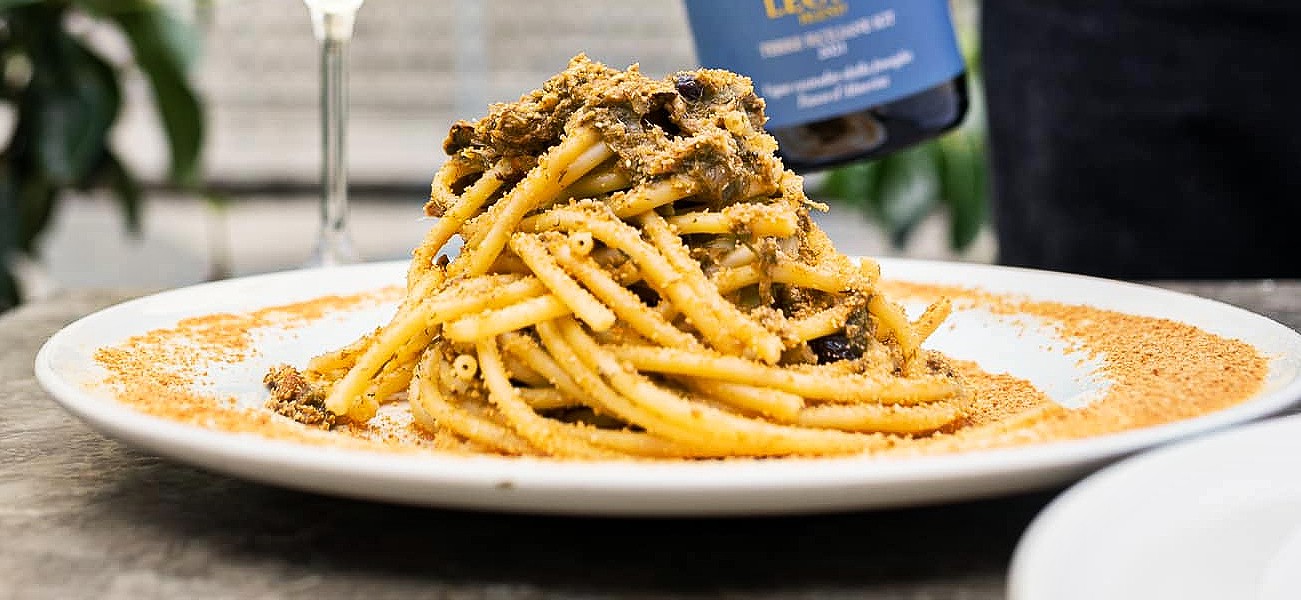
The variations are infinite and totally up to you, let your imagination fly!
But the main point here is that you do not use Parmigiano cheese, a big saving, and you certainly don’t need expensive fresh pasta, any industrial dry version will do. One last tip: better use an Italian brand, others do not use durum wheat, and that makes a big difference in taste and texture.
Do bring some “dolce vita” in your life…

Disclosure: In case you’re wondering why I call this dish “pasta alla Siciliana” when breadcrumbs as a replacement for Parmigiano are popular not just in Sicily but across Italy, it’s because of a discovery I made some thirty years ago, on a trip to Palermo – of all the Sicilian cities, the one best known for its fried street food (a taste inherited from the Arabs who invaded Sicily in the 8th century). I was told by Sicilian friends to try the fried food at a special place called “Antica Foccaceria San Francesco”, a classic since it opened in 1834, and discovered that every single one of their cheapest pasta dishes came with fried breadcrumbs.
Editor’s Note: The opinions expressed here by the authors are their own, not those of Impakter.com — In the Featured Photo: ramen noodles vs. pasta alla Siciliana with breadcrumbs (collage by the author) – other photos are screenshots of Giallo Zafferano’s excellent video on how to make this pasta (click here to see) and from the Antica Foccacceria San Francesco.


